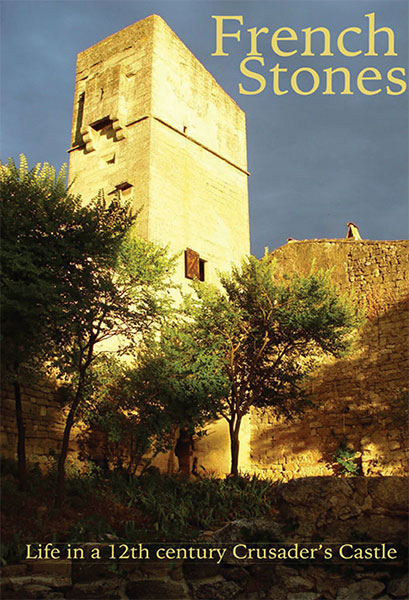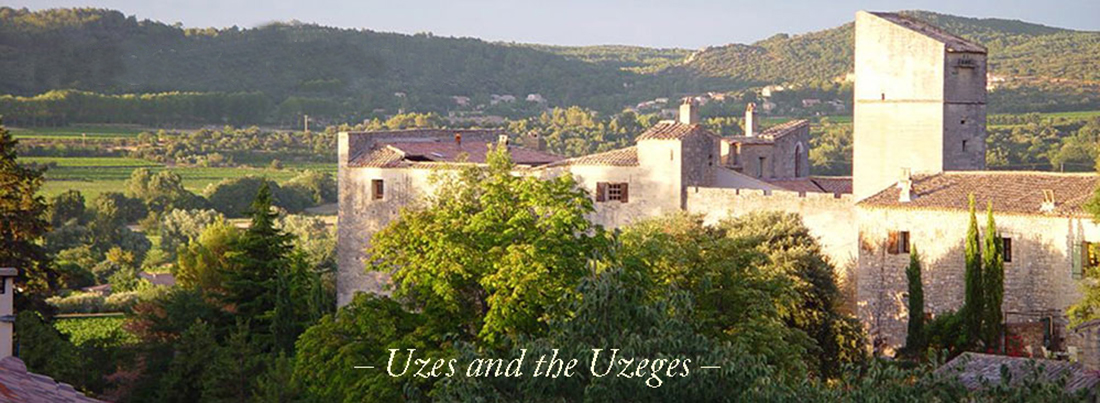
Bleatings and Murmurings in Castelbouc
A visit to the Cevennes Mountain region, and its fabulous Tarn Gorge, should begin with a visit to Castelbouc, a hidden gem of a village that most people drive by because it can’t be seen from the busy road that leads to the gorge.
There’s a turnout on the opposite side of the road that invariably has people leaning over the guard rail to take in the view below, and people driving might wonder what they’re looking at…but keep driving.
What are they looking at? Castelbouc.
Or part of it…
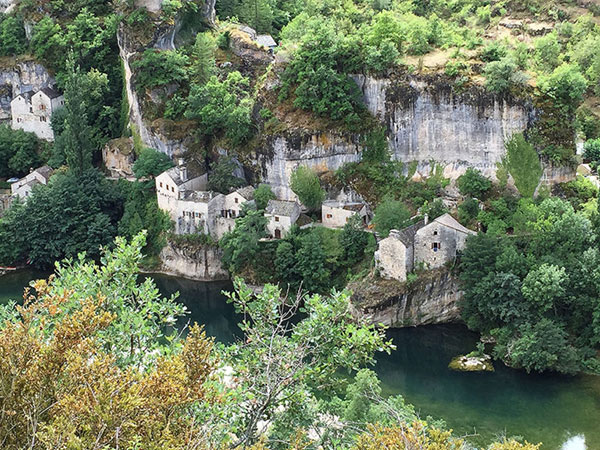
We first came here during our house-buying trip to find a house in the Languedoc. A little internet sleuthing had shown that the house (to the left in the photo above, the one with the three windows on the river side) was for sale by its Dutch owner. And the house built onto it, would be part of the purchase.
Two houses for the price one, thus. One to live in. The other to rent out during the busy summer season.
The drive down the mountainside was exciting, as was the causeway we took to cross the river (the water lay only two feet below our car tires). And when we stopped from the car, all we heard was the sound of birds singing. That and the rushing water. It fell from the mountain above…coursed past in brooks and rivulets…gushed from openings in the rock; all of it in a rush to meet the Tarn river.
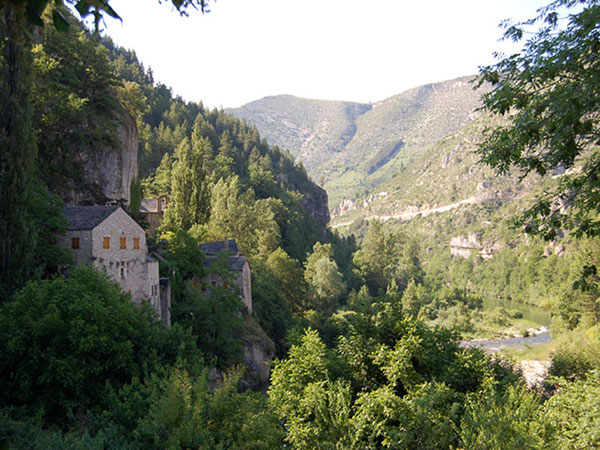
The two homes, together, cost $43,000. (I knew people back home that had paid that much for their car.)
One of the houses would become our summer residence, and the other would be rented out to visitors during the summer vacation. Unquestionably, it was a magical place. Trout rose from the slowly-moving river. Mountains rose high all around. The air was clean and fresh. And the ruins of the 14th century castle of Castelbouc stood at the top of the stone outcropping that hovered over the house.
The house was so beautiful that it was the first we had chosen to see—and quickly seemed to be “the one.” Was there really any reason to look at others?
We couldn’t help but imagine what it would be like to live in such a beautiful place. The home was built on the edge of a steep bank of rock, so close to the river that I could literally have fished from its windows, were I the type to do that kind of thing.
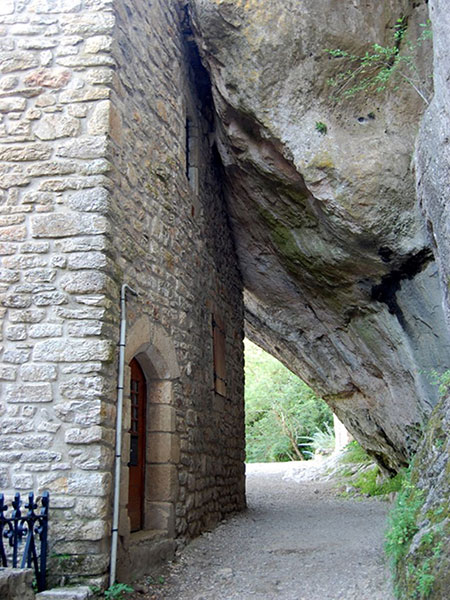
True, there wasn’t much to the front yard. The river was so close that the house had literally been built onto the cliff face that the castle stood upon. But the views! The peace all around! We entered the stone wall-lined patio and took a seat to take in the scene.
A few people walked by. Then a few others.
Then a group of Germans walked by, accompanied by a dog that growled at us. We realized they had come to visit the village and tour the castle ruins. It was only spring, but a small but steady stream of visitors walked right past our front door.
What would it be like during the height of August when all of Europe took their vacation?
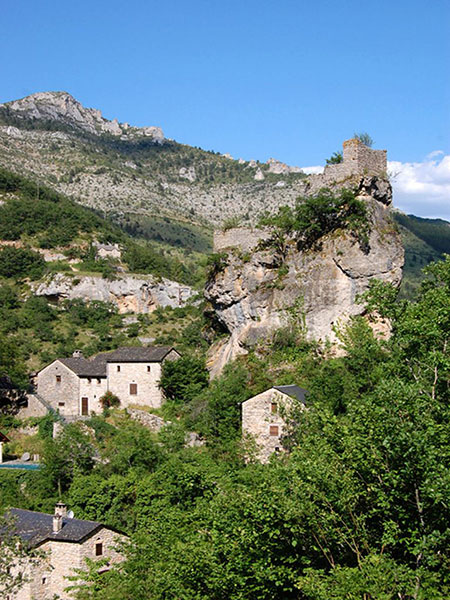
We decided to see what it was that brought people there, and followed the track that led past the home. There was a bend in the path, and we followed it and fell upon Castelbouc village, which lay hidden behind the mountain.

It was an idyllic little village, with absolutely no services. Florac lay about 15 minutes away, if we took the direct route over the causeway…but much longer when the river was in spate, when it could not be used.
We slowly began to realize that, beautiful as it was, a home in Castelbouc did not lie in our future.
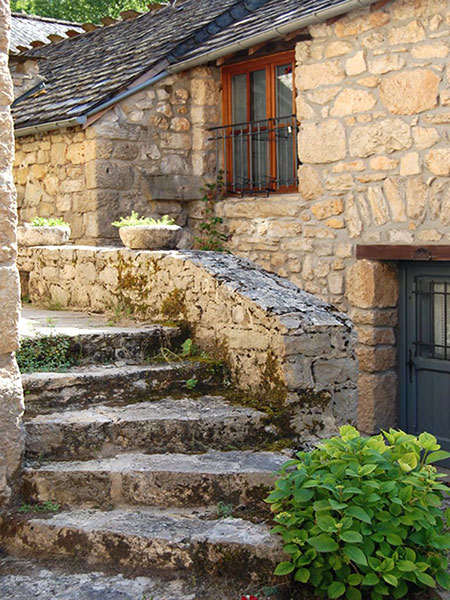
And so we move on. But not before taking the hiking path that led us above the village, where a particularly pretty view could be had of the castle and surroundings.
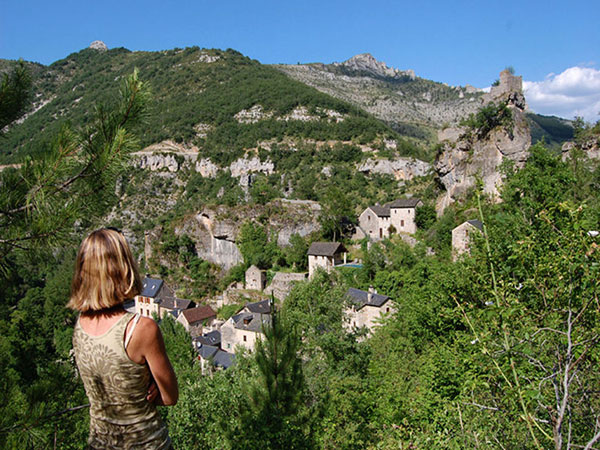
From the Book:
Chapter Four: How to Ruin a Perfectly Good Marriage in Only Three Weeks
Months later, we stood on a promontory that overlooked the astonishingly beautiful Tarn river and gazed down, far down, at a house that looked to be glued to a sheer limestone embankment that hung over the river’s edge.
I imagined myself waking early in that house and throwing open the shutters to let the sun’s rays in. River and mountain views would be the first things that would greet us every day, and at night we’d fall asleep to the whisper of the smooth flow of water.
This was it, I knew. The house we would end up buying. How ironic, that it was the first one we would visit.
I followed the line of rock up from the home to where the ruins of the 14th century castle of Castelbouc stood. The sight made me smile, because it meant the house would come with some very special extras. Not only was it situated in the middle of a natural park, one of France’s most beautiful, but research had disclosed that included in the sale would be a healthy amount of “bleatings and murmurings.”
It all had to do with Castelbouc’s history.
Seven hundred years earlier, crusading fever had seized this part of the Languedoc, and Peter the Hermit, or some equivalent zealot, had ridden his donkey into the village and begun to preach the need for Castelbouc’s men to kiss their wives and children goodbye and set off for the Holy Land on crusade.
Suggesting that people travel vast distances across hostile territory, suffering privation and disease along the way, and most likely ending up getting themselves killed in the process, did not generally make for the most persuasive of arguments. But somehow, Peter the Hermit pulled it off. Serfs and cobblers, carpenters and tanners, shepherds and knights: all the able-bodied men of Castelbouc were instantly seized with a burning desire to go on crusade.
All that is, but one.
The lord of Castelbouc, owner of the beautiful and comfortable castle that overlooked the Tarn river, had absolutely no intention whatsoever of traveling to the Holy Land He knew what crusaders were like: nasty, brutish things involving swords, battle axes, spears and the pox. Always, the pox.
It was a puzzling thing. He looked around him and saw his subjects—of high station and low—busily stitching rough cloth crosses onto their tunics and shrieking aloud their willingness to sacrifice all for Jesus. Even some of the women and children were doing it.
This augured nothing but trouble.
One assumes it was about this time that the villagers became aware they had yet to hear anything from their leader—the lord they had sworn fealty to, the man who, according to the conventions of the middle ages, was to lead them into battle. Lead them to Jerusalem.
All eyes turned to the lord of Castelbouc. An awkward silence hung in the air. Feet were shuffled. Concerned looks were exchanged. Peter the Hermit cocked a questioning eyebrow…
